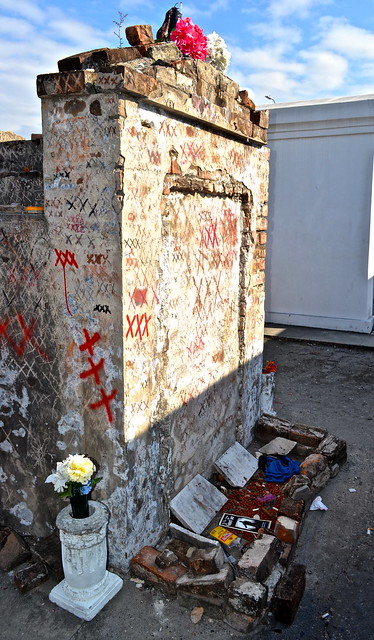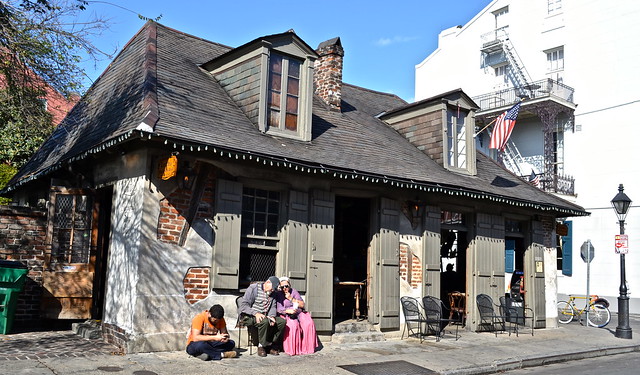55 New Orleans History Facts and Information You Must Know
0 View
Share this Video
- Publish Date:
- March 31, 2023
- Category:
- HOW TO -
- Video License
- Standard License
- Imported From:
- Youtube
Tags
Sponsored Area
TODAY'S ADVENTURE
55 New Orleans History Facts and Information You Must KnowBefore arriving at any new destination I like to learn as much as possible about each place I visit. New Orleans is like the mother load of history, facts, and totally out-there-info about a place. This is the reason New Orleans is what it is. Here are some of the best facts about New Orleans.
New Orleans History Facts
La Nouvelle-Orléans (New Orleans) was founded May 7, 1718, by the French Mississippi Company.The French colony was ceded to the Spanish Empire in the Treaty of Paris (1763).During the American Revolutionary War, it was an important port for smuggling aid to the rebels, transporting military equipment and supplies up the Mississippi River.New Orleans remained under Spanish control until 1801 when it was given back to France.Nearly all of the surviving 18th-century architecture of the Vieux Carré (French Quarter) dates from the Spanish period.Recommended Read: Tips for Visiting New Orleans with Kids
Napoleon sold Louisiana (New France) to the United States in the Louisiana Purchase in 1803.After the end of the Haitian revolution in 1804 (when it became free from France) New Orleans received a lot of refugees, including the ones who had originally found refuge in Cuba.The 1809 migration brought 2,731 whites, 3,102 free persons of African descent, and 3,226 enslaved persons of African descent, these doubled the population of the city.During the final campaign of the War of 1812, the British sent a force of 11,000 soldiers, marines, and sailors, in an attempt to capture New Orleans but they were defeated.New Orleans played a major role in the Atlantic slave trade, handled huge quantities of commodities for exported and imported goods.Despite its role in the slave trade, New Orleans at the same time had the largest and most prosperous community of free persons of color in the nation.The population of the city doubled again in the 1830s and by 1840, New Orleans had become the wealthiest and the third-most populous city in the nation.In the 1850s, white Francophones remained an intact and vibrant community. They maintained instruction in French in two of the city’s four school districts.The port was the third-largest in the nation in terms of tonnage of imported goods, after Boston and New York, handling 659,000 tons in 1859.Gen. Benjamin F. Butler, a respected state lawyer of the Massachusetts militia, occupied the City in 1862. He abolished French language instruction in city schools.By the end of the 19th century, French usage in the city had faded significantly.However, as late as 1902 one-fourth of the population of the city spoke French in ordinary daily intercourse, while another two-fourths was able to understand the language perfectly.In 1872, lieutenant governor P.B.S. Pinchback, who was of mixed race, succeeded Henry Clay Warmouth for a brief period as Republican governor of Louisiana, becoming the first governor of African descent of an American state.The “White League”, an insurgent paramilitary group that supported the Democratic Party, was organized in 1874 and operated in the open, violently suppressing the black vote.In 1874, in the Battle of Liberty Place, 5,000 members of the White League fought with city police to take over the state offices for the Democratic candidate for governor, holding them for three days.By 1876, such tactics resulted in the white Democrats, the so-called Redeemers, regaining political control of the state legislature.White Democrats passed Jim Crow laws, establishing racial segregation in public facilities.In 1986 the U.S Supreme Court ruled that “separate but equal” accommodations were constitutional, effectively upholding Jim Crow measures.In the post-World War II period, other Sun Belt cities in the South and West surpassed New Orleans in population. Construction of railways and highways decreased river traffic, diverting goods to other transportation corridors and markets.During the later years of Morrison’s administration (1946 – 1961), and for the entirety of Schiro’s, the city was a center of the Civil Rights struggle.When six-year-old Ruby Bridges integrated William Frantz Elementary School in the city’s Ninth Ward (the 1950s), she was the first child of color to attend a previously all-white school in the South.In 1965, flooding from Hurricane Betsy killed dozens of residents.New Orleans became increasingly dependent on tourism as an economic mainstay in 1986 and still is.New Orleans was catastrophically affected by what the University of California Berkeley’s Dr. Raymond B. Seed called “the worst engineering disaster in the world since Chernobyl,” when the Federal levee system failed during Hurricane Katrina in 2005The city was declared off-limits to residents while efforts to clean up after Hurricane Katrina began. The approach of Hurricane Rita in September 2005 caused repopulation efforts to be postponed.Fun facts about New Orleans
This is the largest city in the state of Louisiana.The city gets its name after the duke of Orleans. He was who was Regent of the Kingdom of France for Louis XV from 1715 to 1723.It is well known for its distinct French and Spanish Creole architecture.It is famous around the world for one if its festivals: Mardi Gras.
Recommended Read: New Orleans Voodoo Cementery Tours


Bourbon Street
Its beauty dates back to 1718 when New Orleans was founded by Jean-Baptiste Le Moyne de Bienville.Also known as “Rue Bourbon,” this historic street sits at the heart of the French Quarter, extending 13 blocks from Canal St. to Esplanade Avenue.Recommended Read: New Orleans French Market
Highlights
One of the most luxurious hotels on Bourbon Street, The Royal Sonesta Hotel, opened in 1969.Another popular building is Jean Lafitte’s Blacksmith Shop located on the corner of Bourbon Street and St. Phillip Street. The building was constructed sometime before 1772 and is said to be where the Lafitte brothers opened their blacksmith shop as a façade so they could carry out their privateer efforts.
The post 55 New Orleans History Facts and Information You Must Know appeared first on Travel Experta - Travel, Lifestyle, Freedom.
-
By: Marina 'Travel Experta'
Title: 55 New Orleans History Facts and Information You Must Know
Sourced From: travelexperta.com/new-orleans-history/
Published Date: Wed, 29 Mar 2023 11:00:33 +0000
Did you miss our previous article...
https://onebagtravel.club/how-to/amish-traditions-lancaster-county-carriage-and-antique-auction











